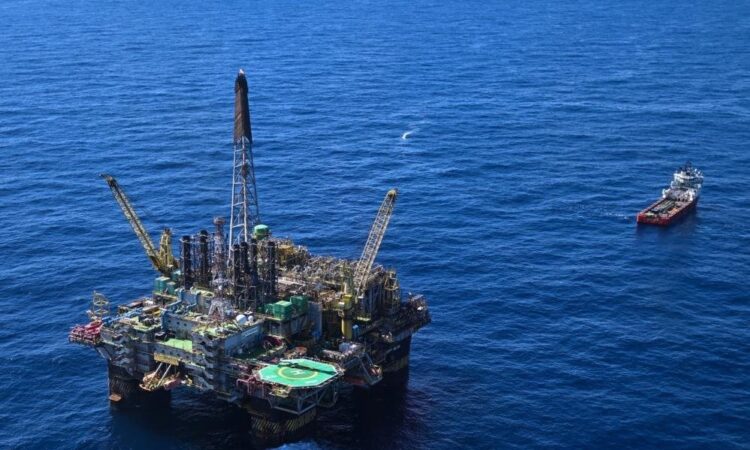
Brazilian oil company Petrobras’ P-51 platform sits above the Marlim Sul field in the Campos Basin off the northern coast of Rio de Janeirol, Petrobras has launched a revitalization project to extend the life and increase production in the basin. File Photo by Andre Borges/EPA
SANTIAGO, Chile, Oct. 23 (UPI) — Latin America is gradually positioning itself as a key player in the global energy landscape. Investments in oil and gas are revealing a different side of the region, driven by growing worldwide demand for petroleum.
According to the World Energy Investment 2025 report, global investment in fossil fuels is expected to fall 2% this year, the first decline since 2020. However, Latin America is moving in the opposite direction.
“Given the geopolitical events involving countries with large oil and gas reserves, such as Russia and Iran, and Latin America’s distance from active conflict zones, the region has been attracting significant inflows of investment,” Manuel Fernández, KPMG’s energy leader for South America, told UPI.
In Brazil, investment plans for 2025 alone total about $26 billion to increase production to 4.28 million barrels of oil and 221 million cubic meters of natural gas, according to the National Agency of Petroleum, Natural Gas and Biofuels.
State-owned Petrobras, specifically, is carrying out an investment plan worth $111 billion, mostly directed toward exploration and production of hydrocarbon projects. The goal is to reach production of 3.2 million barrels per day by 2029, 2.5 million of which would be crude oil.
Mexico’s National Hydrocarbons Commission has approved private investments exceeding $45.05 billion between 2024 and 2054 for exploration and extraction.
Another example is Guyana, which since the discovery of the Stabroek oil block in 2015 has been dubbed “the Dubai of South America.” With estimated reserves that exceed 11 billion barrels of oil and gas, its daily production reached 645,000 barrels in 2024 and is projected to surpass 1 million barrels by 2027.
The boom has been driven by strategic partnerships with private companies such as ExxonMobil, Hess Corp. and China’s CNOOC, which have provided technology, capital and operational speed.
Guyana has adopted a privately managed model under strong fiscal oversight, even creating a sovereign wealth fund that already exceeds 12.5% of its gross domestic product.
“The low production costs compared with other deep-water areas, along with light, high-quality crude and large volumes, have attracted major companies such as ExxonMobil and Hess, among others, to explore and produce in Guyana. In addition, the government offered favorable fiscal and contractual regimes that drew investors,” Fernández said.
Vaca Muerta in Argentina is one of the country’s largest hydrocarbon reserves and the world’s fourth-largest oil reserve. Hydrocarbon production from the reserve reached record levels in July, with 529,291 barrels of crude per day and 113.92 million cubic meters of gas per day — a milestone in Argentina’s energy history.
Recently, the Argentine oil company YPF and Italy’s ENI signed an agreement to produce and export 12 million tons of liquefied natural gas annually from Vaca Muerta, which could generate about $14 billion in yearly revenue.
Rodolfo Reyes, an economist at the University of Santiago, told UPI that by combining output from Brazil, Mexico, Guyana, Argentina, Colombia and Venezuela, “Latin America could reach total production of between 10 million and 12 million barrels per day by 2030.”
“That figure represents roughly 12% of the world’s projected output for that year, positioning Latin America as the third-largest producing bloc after the Middle East and the United States,” Reyes
But for Latin America to become an attractive hub for hydrocarbon production, it must offer economic stability.
“We’ve seen it before with copper, lithium and soy. Oil could become another mirage unless it’s accompanied by redistributive policies, investment in innovation and stronger institutions,” Reyes said.


